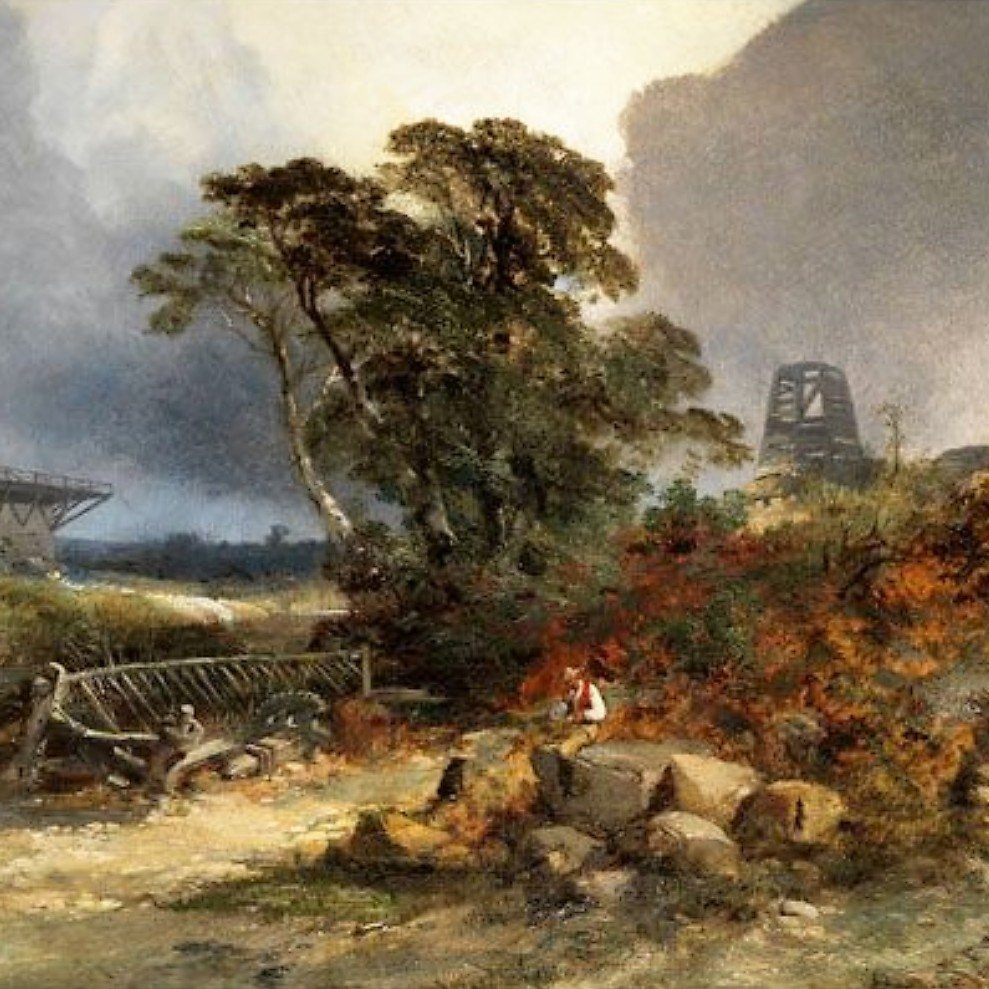Signed lower right.
In an ornate period gilt frame. Joseph Quinaux: Belgian romantic landscape painter. He was the son of Michel Quinaux, a decorative painter. Joseph Quinaux received his complete training at the Academy of Arts in Namur. His teacher was Ferdinand Marinus, the director of the institution. Marinus was a landscape painter who evolved from a pre-Romantic style to a clearly Romantic approach to the genre. Théodore Fourmois, the painter who is considered the most important pioneer of realistic landscape painting in Belgium, is also mentioned in connection with his training. Quinaux made his debut at the Salon of 1844 in Brussels. Until 1885, he took part in almost all the Belgian salons. These salons, collective exhibitions of living artists, were more or less the only points of contact with the public, with the exception of the studio. In 1876, Quinaux became a drawing teacher and lecturer at the Brussels Academy. In this capacity, he was responsible for the training of many important painters who came to study at the Brussels Academy between 1876 and 1895. Quinaux found inspiration for most of his paintings in the Ardennes and the Grand Duchy from Luxemburg. A group of his early works was created in Fontainebleau. This is a fascinating fact, because it was precisely there - in Barbizon - that a nucleus of modernist landscape painters was active, laying the foundations for realism and the outdoors. Quinaux was one of the most prominent representatives of Romantic and Realist landscape painting in Belgium, along with figures such as Ferdinand Marinus, François-Xavier Roffiaen, Paul Lauters and Pierre-Louis Kuhnen. A sense of balanced composition and great technical skill underlie his work. Antwerp, Royal Museum of Fine Arts Brussels, Royal Museums of Fine Arts of Belgium: "View of the Dauphiné" (1869) and "Padaugeant dans la Lesse" (1875; figures by De Haes) Dinant Sydney: "Bridge over the Lesse in Dinant". Namur: own works donated to the City of Namur by bequest
































 Le Magazine de PROANTIC
Le Magazine de PROANTIC TRÉSORS Magazine
TRÉSORS Magazine Rivista Artiquariato
Rivista Artiquariato